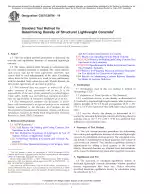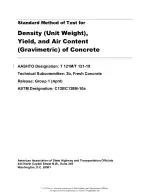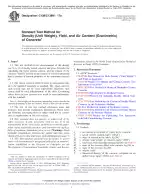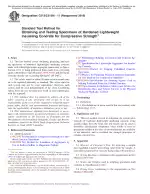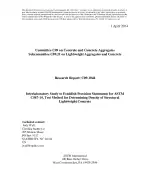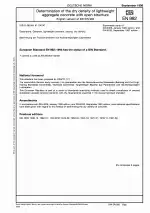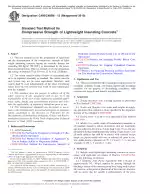ASTM C567/C567M-19 PDF Download
Standard ENStandard Test Method for Determining Density of Structural Lightweight Concrete
Also Known As:
ASTM C567/C567M-19 is a standard test method that provides procedures for determining the density of structural lightweight concrete. The density of the concrete is an important parameter that determines if the specified density requirements have been met. The equilibrium density is typically calculated using the procedures specified in section 9.2 of the standard, unless otherwise specified.
To determine the density of freshly mixed lightweight concrete, Test Method C138/C138M is used. The fresh density of lightweight aggregate concrete is influenced by factors such as mixture proportions, air content, water demand, and the specific density and moisture content of the lightweight aggregate. The decrease in density over time is mainly due to moisture loss, which is affected by aggregate moisture content, ambient conditions, and the ratio of surface area to volume of the concrete member. Equilibrium density is typically reached at around 90 days for most structural lightweight concretes, and at around 180 days for high-strength lightweight concretes. It is important to note that despite variations in initial moisture content, the equilibrium density will generally be approximately 50 kg/m3 [3.0 lb/ft3] higher than the oven-dry density.
| Descriptors | oven-dry density, drying ovens, structural materials,Light-Weight Concrete,Density and Relative Density,Laboratory Ovens |
| ICS Codes | 91.100.30 - Concrete and concrete products |
| Language(s) | English |
| File Size | 81.9 KB |

